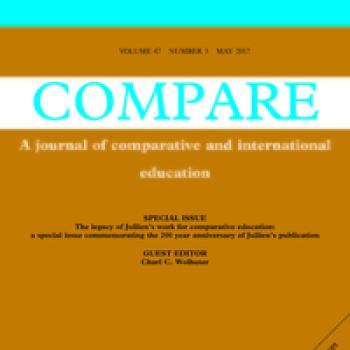Publication Information

Using unique panel data from Young Lives study conducted in undivided Andhra Pradesh, India, this mixed-method paper analyses gender differentials in completion of secondary education.
Results show biased secondary school completion rates in favor of boys. Probit regression results highlight certain variables such as mothers’ education, wealth, high self-efficacy, early reading skills, lower birth order, and not engaging in more than two hours of domestic work and paid work at age 12, as positively associated with educational outcomes for girls. Decomposition analysis highlights that engaging in domestic chores at age 12 is the most contributory factor (36%) for the persisting gender gap.
The other unexplained contributory factors may well be existing discriminatory social norms and son preference, which is captured by the qualitative case studies.
The findings suggest that unless we are able to address persisting gender norms, universalizing secondary education with gender equity, will remain a distant dream.
Keywords
gender secondary schooling, mixed methods, discrimination, India.
Download ‘Whatever she may study, she can’t escape from washing dishes’: gender inequity in secondary education – evidence from a longitudinal study in India, Renu Singh, Protap Mukherjee.

Using unique panel data from Young Lives study conducted in undivided Andhra Pradesh, India, this mixed-method paper analyses gender differentials in completion of secondary education.
Results show biased secondary school completion rates in favor of boys. Probit regression results highlight certain variables such as mothers’ education, wealth, high self-efficacy, early reading skills, lower birth order, and not engaging in more than two hours of domestic work and paid work at age 12, as positively associated with educational outcomes for girls. Decomposition analysis highlights that engaging in domestic chores at age 12 is the most contributory factor (36%) for the persisting gender gap.
The other unexplained contributory factors may well be existing discriminatory social norms and son preference, which is captured by the qualitative case studies.
The findings suggest that unless we are able to address persisting gender norms, universalizing secondary education with gender equity, will remain a distant dream.
Keywords
gender secondary schooling, mixed methods, discrimination, India.
Download ‘Whatever she may study, she can’t escape from washing dishes’: gender inequity in secondary education – evidence from a longitudinal study in India, Renu Singh, Protap Mukherjee.

